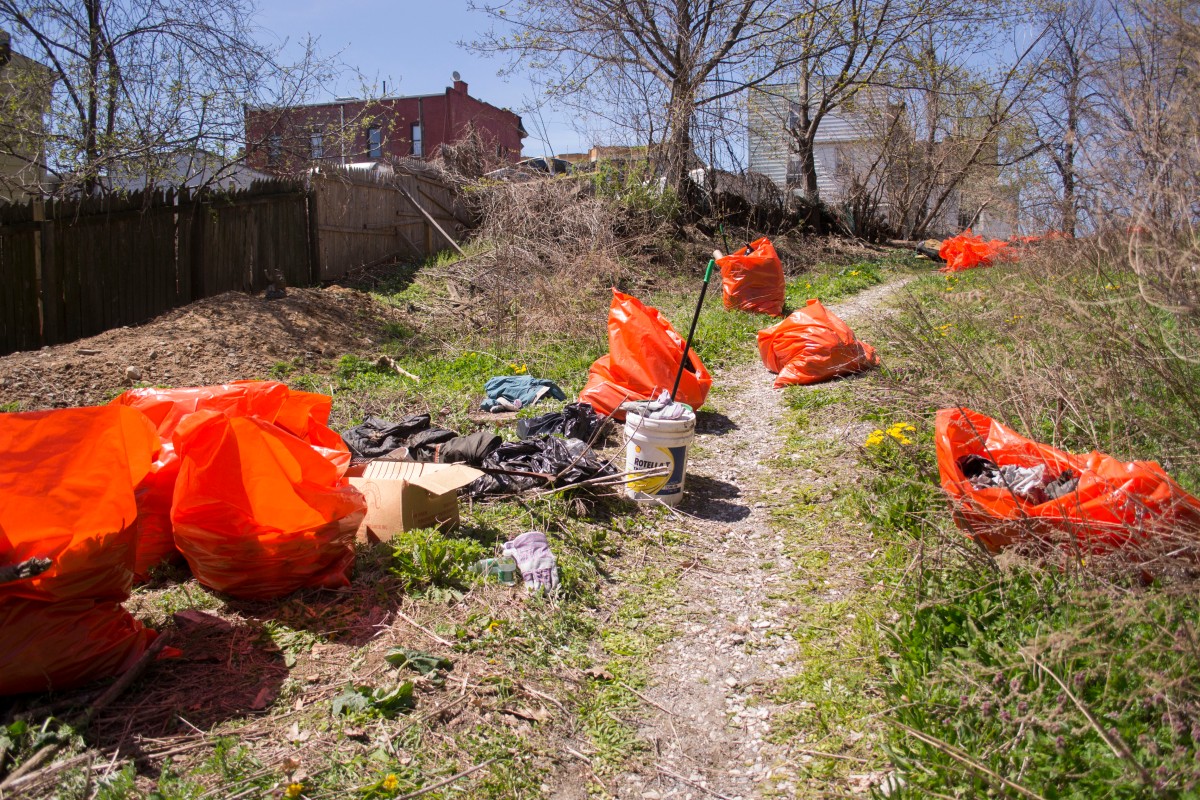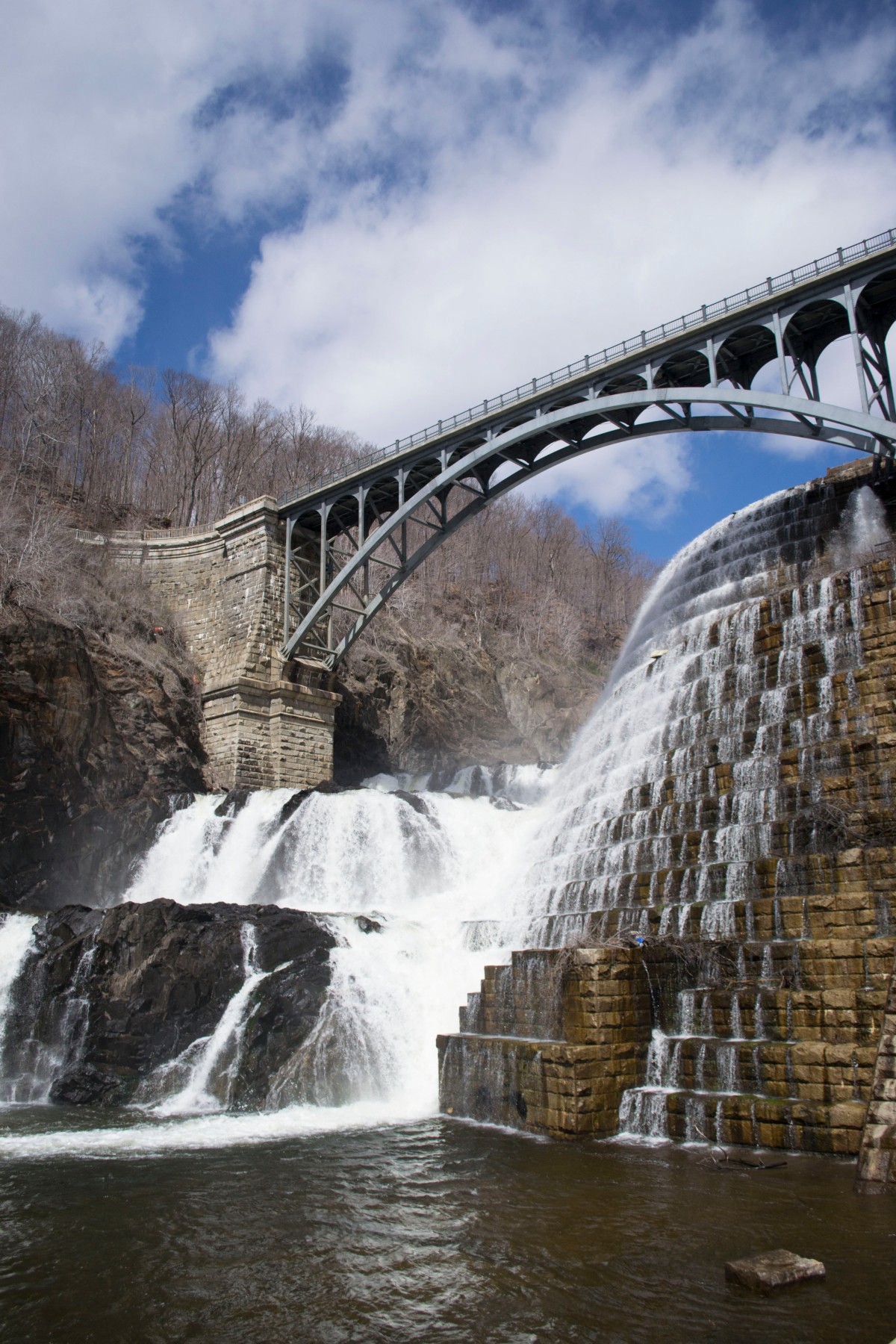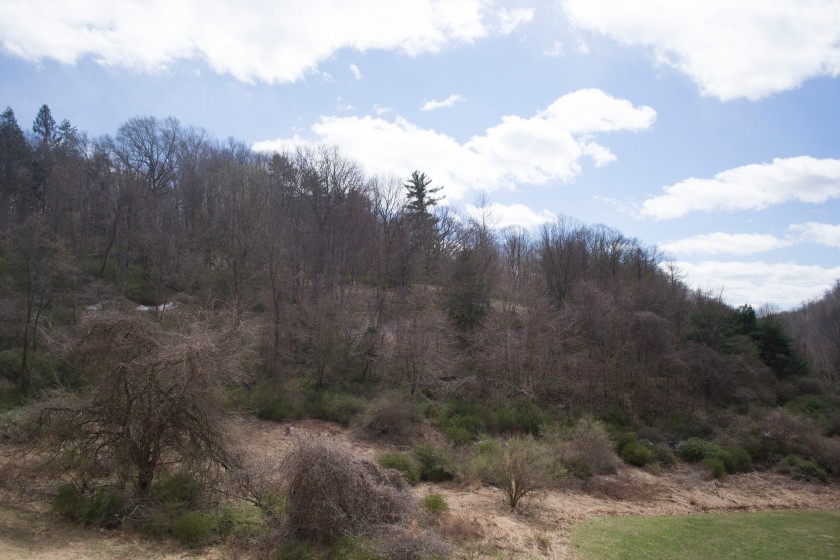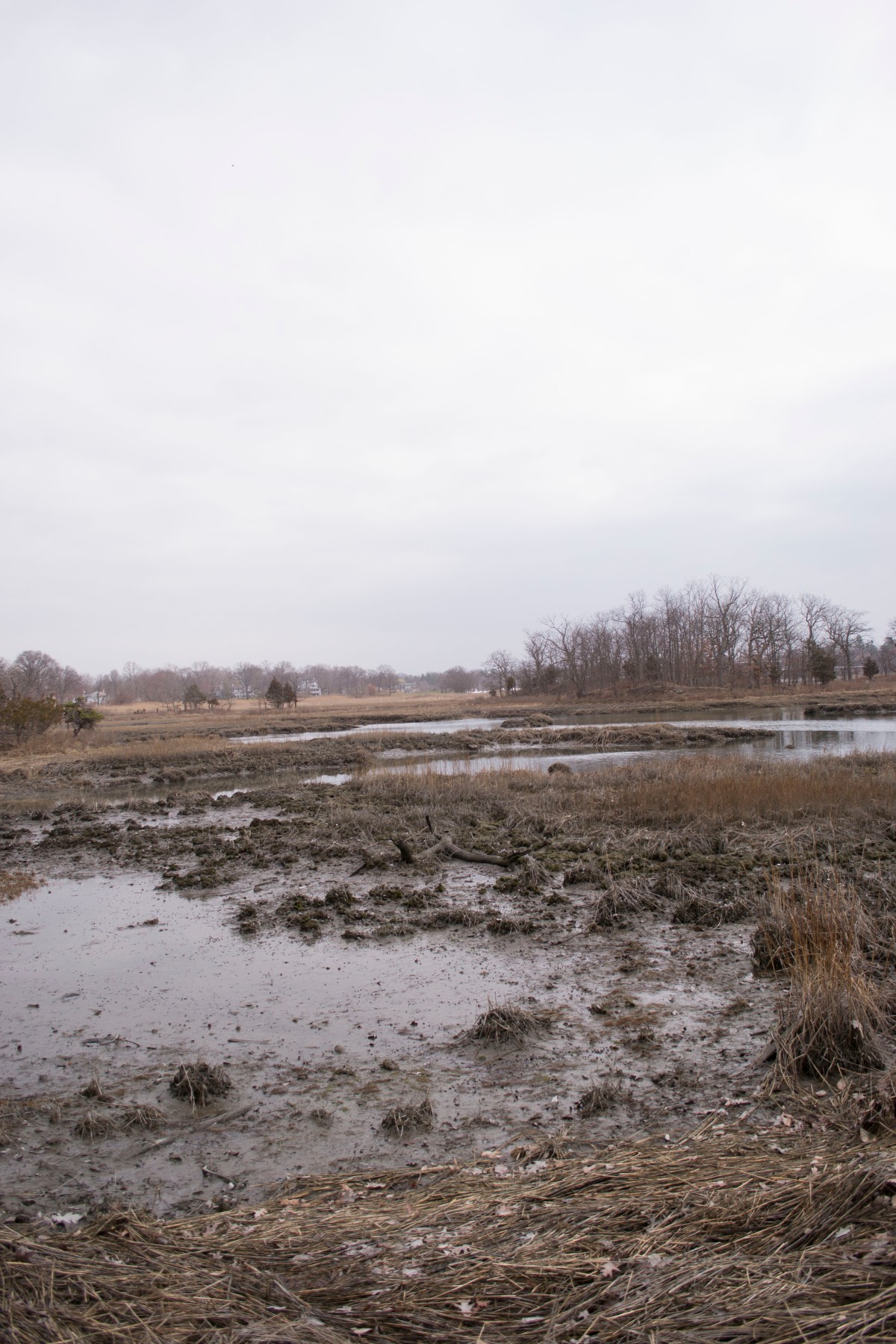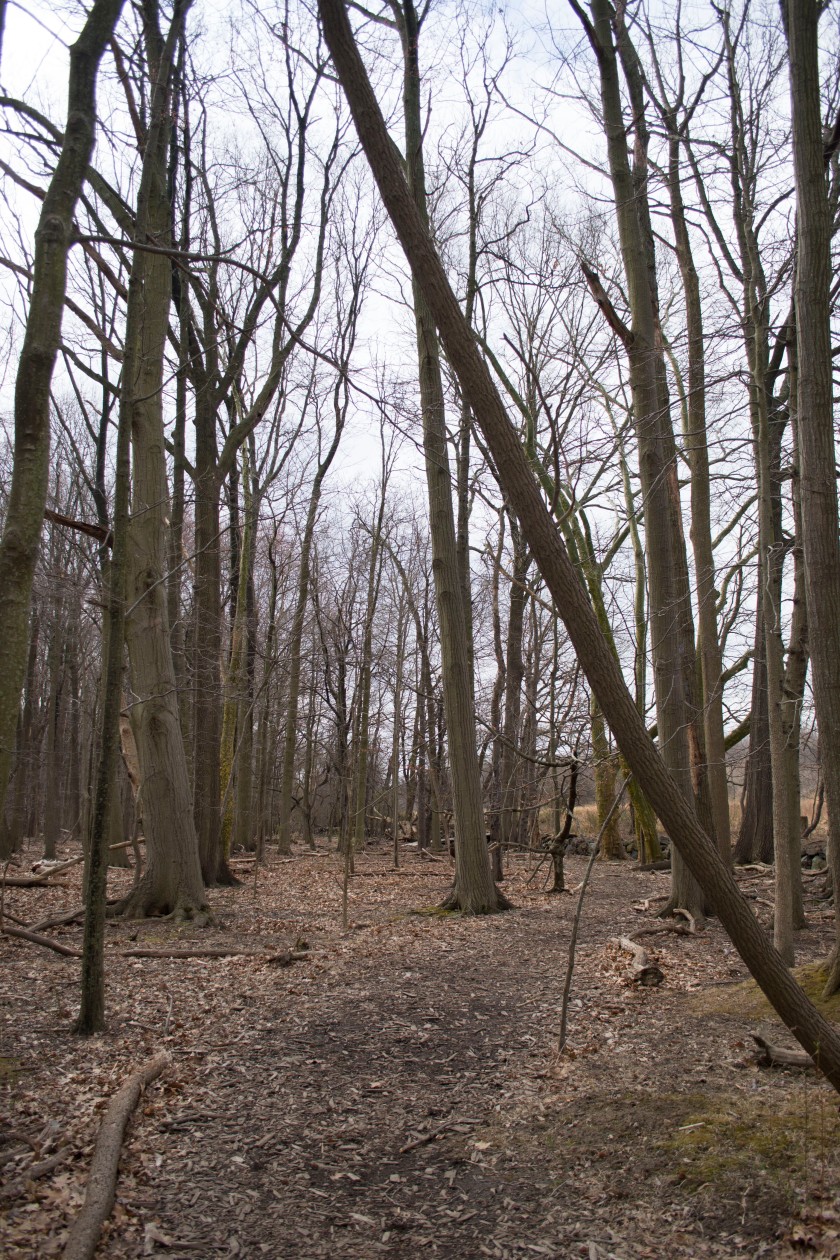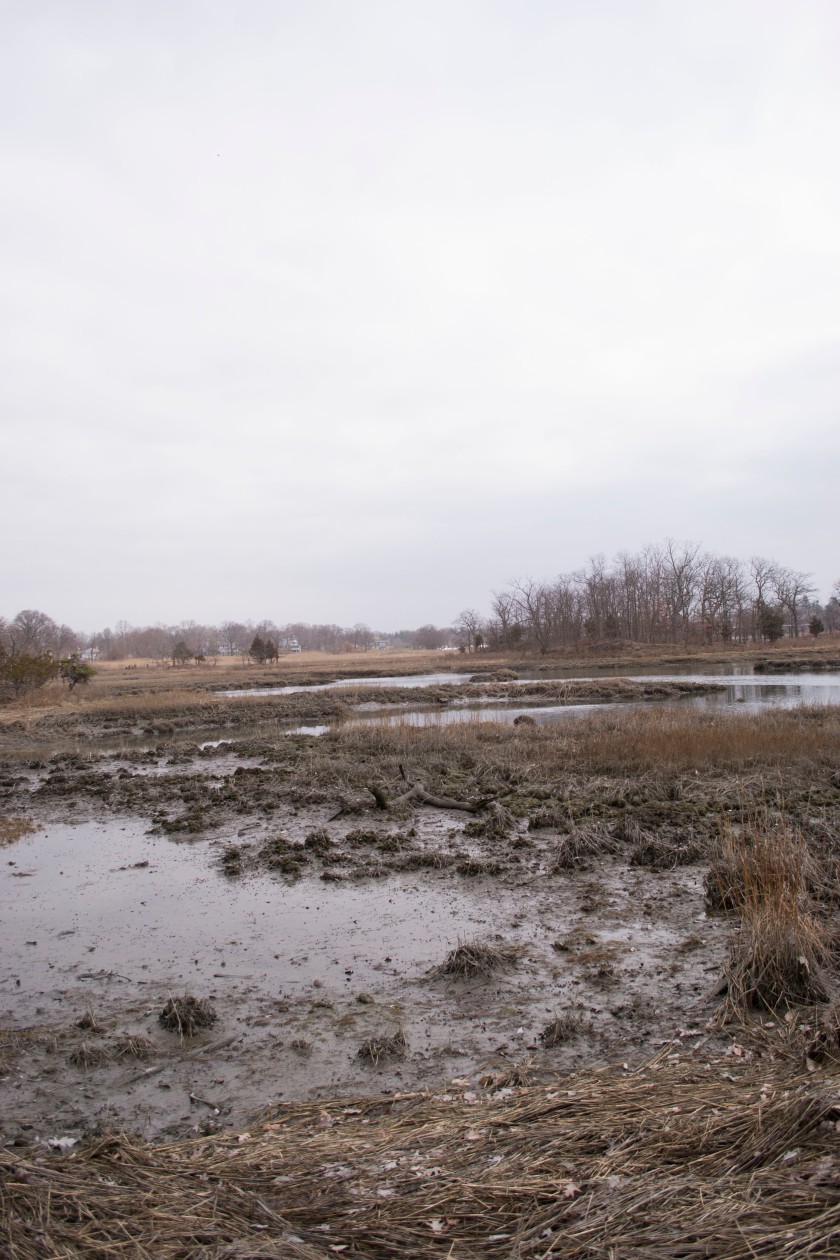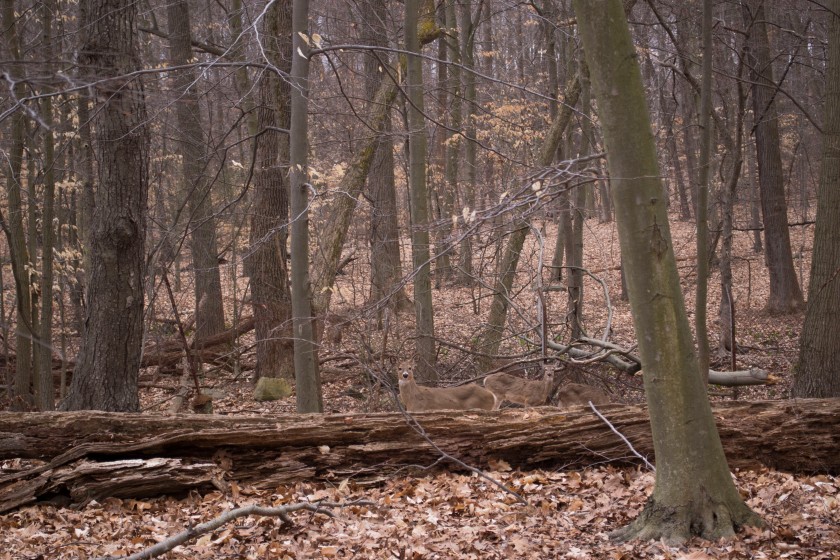Despite only walking a section of the Old Croton Aqueduct State Trail less than a mile long, I spent more than 4 hours on it one April morning. A group of over 200 volunteers gathered in Yonkers around a buffet of food to listen to the mayor and various other city officials talk about the importance of maintaining the trail. We could barely understand them over the murmurings of the crowd, though we did hear a shout out to Sarah Lawrence College, even though only three of us came to help with the cleanup. After the men and women in suits finished speaking, the rest of us took to the trail and the Annual Yonkers Cleanup Day really began. We were all ready to get started on what we were actually there for – making the section of the OCA in Yonkers a more pleasant space.
Dumping problems paralyzes this section of the trail, which spans from Palisade Ave to Prescott St. The trail is seen as a convenient area to get rid of bulky items, such as mattress or reclining chairs. During our cleanup I saw at least two of each, as well as many other interesting items. The biggest problem was the amount of litter – bottles, cigarettes, Styrofoam, plastic plates. With no garbage cans along the pathway, people think that they can just throw their trash anywhere. The worst items were the plastic bags. They were partially decomposed and tore into tiny pieces as we tried to pick them up.
Trash is not the only problem the trail has though, the trees are covered in invasive vines. Like in a lot of the parks I’ve visited in New York, many of the trees have been completely taken over by vines. The Friends of the Old Croton Aqueduct have two events planned in the near future, one at the section of the trail in Croton-on-Hudson and the other with a location unspecified, which will focus on weeding out invasive species on the trail. They also encourage people who wish to volunteer to specifically focus on trail cleanup and invasives removal.
Unlike most of the parks I have visited during this project, the trail is not directly on the water. That means that while thinking about how the trail will fare against climate change, rising sea levels are not an important concern. What is a concern is getting rid of invasive species and preventing dumping and littering.
If the trash in the park continues to be mismanaged that could lead to it getting into the waterways and hurting the marine animals. Cigarette butts, which are prevalent on the trail, are considered toxic waste. They do not biodegrade – the plastic in the filters just breaks down into smaller pieces. The toxins from cigarettes also leach into the water and can kill wildlife. In addition, the park has other waste, like needles, which can become hazards to unsuspecting people whom simply want to enjoy the park. To prevent more damage from occurring on the trail and lessen the effects of climate change, I would encourage the placement of trashcans along the trail. It might also be helpful if the Yonkers Clean Up event occurred more frequently than just once a year.
Helpful Links:
http://nysparks.com/parks/96/details.aspx
http://aqueduct.org/news/oca-trail-2016-yonkers-clean-project-continues
http://www.nycgovparks.org/park-features/virtual-tours/old-croton-aqueduct-trail
http://www.groundworkhv.org/programs/community-building/old-croton-aqueduct-trail/
http://yonkers.dailyvoice.com/events/volunteers-help-clean-up-old-croton-aqueduct-trail/554285/
http://www.no-smoke.org/learnmore.php?id=731

